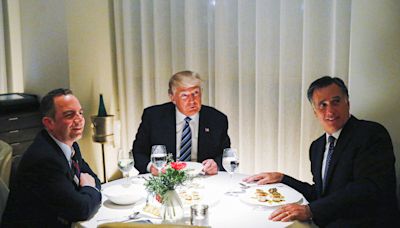Search results
Ford succeeded to the presidency when Nixon resigned in 1974, but was defeated for election to a full term in 1976. Ford is the only person to serve as president without winning an election for president or vice president. Ford was born in Omaha, Nebraska and raised in Grand Rapids, Michigan.
- Richard Nixon
- Jimmy Carter
Gerald Rudolph Ford Jr., the nation’s only unelected president and vice president, served thirteen terms in Congress before rising to national attention in 1973, when President Richard Nixon nominated him as vice president. Less than a year later, Ford became president, following President Nixon's resignation from office.
- Early Years
- College Years
- Outstanding Athlete
- Yale Law School
- Congress
- Vice President
- President
- Pardon and Amnesty
- New Administration
- Outstanding Cabinet and White House Staff
GERALD R. FORD, the 38th President of the United States, was born LESLIE LYNCH KING, JR., the son of Leslie Lynch King and Dorothy Ayer Gardner King, on July 14, 1913, in Omaha, NE. His parents separated 2 weeks after his birth, and his mother moved with him to Grand Rapids, MI, to live with her parents. On February 1, 1916, approximately 2 years a...
From 1931 to 1935 Mr. FORD attended the University of Michigan at Ann Arbor, where he majored in economics and political science, and graduated with a B.A. degree in June 1935. At a time of national economic hardship, he financed his education with part-time jobs, a small scholarship from his high school, and modest family assistance.
An extremely gifted athlete, Mr. FORD was a 3-year letterman and played on University of Michigan’s national championship football teams in 1932 and 1933. He was voted the Wolverine’s most valuable player in 1934. On January 1, 1935, he played at Soldier Field against the Chicago Bears in the Chicago Tribune College All-Star Football Game, and his ...
Mr. FORD chose the legal profession over a professional football career. To help pay for law school, he initially took a dual position as assistant varsity football coach and boxing coach at Yale University, where he coached future U.S. Senators Robert Taft, Jr. and William Proxmire. He enrolled in Yale Law School, while also continuing his coachin...
Returning home to Grand Rapids, Mr. FORD became a partner in the prestigious law firm of Butterfield, Keeney and Amberg. A self-proclaimed ‘‘compulsive joiner,’’ he was already well known throughout the community. He rejected his previous support for isolationism and adopted, instead, an outlook more in keeping with America’s new-found responsibili...
When Vice President Spiro Agnew resigned in October 1973, President Nixon was authorized by the 25th Amendment to appoint, subject to congressional confirmation, a replacement. He needed someone who could work with Congress, survive close scrutiny of his political career and private life, and be confirmed quickly. Heeding an immediate and strong bi...
The specter of the Watergate scandal, the break-in at Democratic headquarters during the 1972 campaign, and the ensuing coverup by Nixon administration officials hung over Mr. FORD’s 9-month tenure as Vice President. When it became apparent that evidence, public opinion, and the mood in Congress were all pointing toward impeachment, Richard Nixon b...
Shortly after becoming President, he announced amnesty terms for Vietnam-era draft evaders and pardoned his predecessor. Both acts were highly controversial at the time, but President FORD courageously put America’s best interests ahead of his own political popularity. The pardon of Richard Nixon was an act as personally courageous as it was politi...
Within the month President FORD nominated Nelson Rockefeller for Vice President. On December 19, 1974, Rockefeller was confirmed by Congress, and the country once more had a full complement of leaders. Mr. FORD confronted a divisive war in Southeast Asia, rising inflation at home, and a desperate need to restore the credibility of the Presidency. H...
One of Mr. FORD’s greatest strengths as a leader was his self-confidence and sense of security around others. According to columnist David Broder, President FORD ‘‘had one of the most competent staffs any of us have seen.’’ The advisors he appointed included a large number of extremely bright, capable people who would go on after the Ford administr...
People also ask
How did Gerald Ford become president?
When did Gerald Ford retire?
How long did Gerald Ford's presidency last?
Who was Gerald Ford?
Between 1973 and 1977, Gerald R. Ford became vice president and president without ever getting a single vote. Here's how he did it.
Gerald R. Ford became President of the United States on August 9, 1974, under extraordinary circumstances. Owing to the Watergate scandal, Ford's predecessor, Richard Nixon, had resigned under the threat of congressional impeachment.
Gerald Ford being sworn in as U.S. president, August 9, 1974. Ford’s was essentially a caretaker government. He had no mandate and no broad political base, his party was tainted by Watergate, and he angered many when he granted Nixon an unconditional pardon on September 8, 1974.


